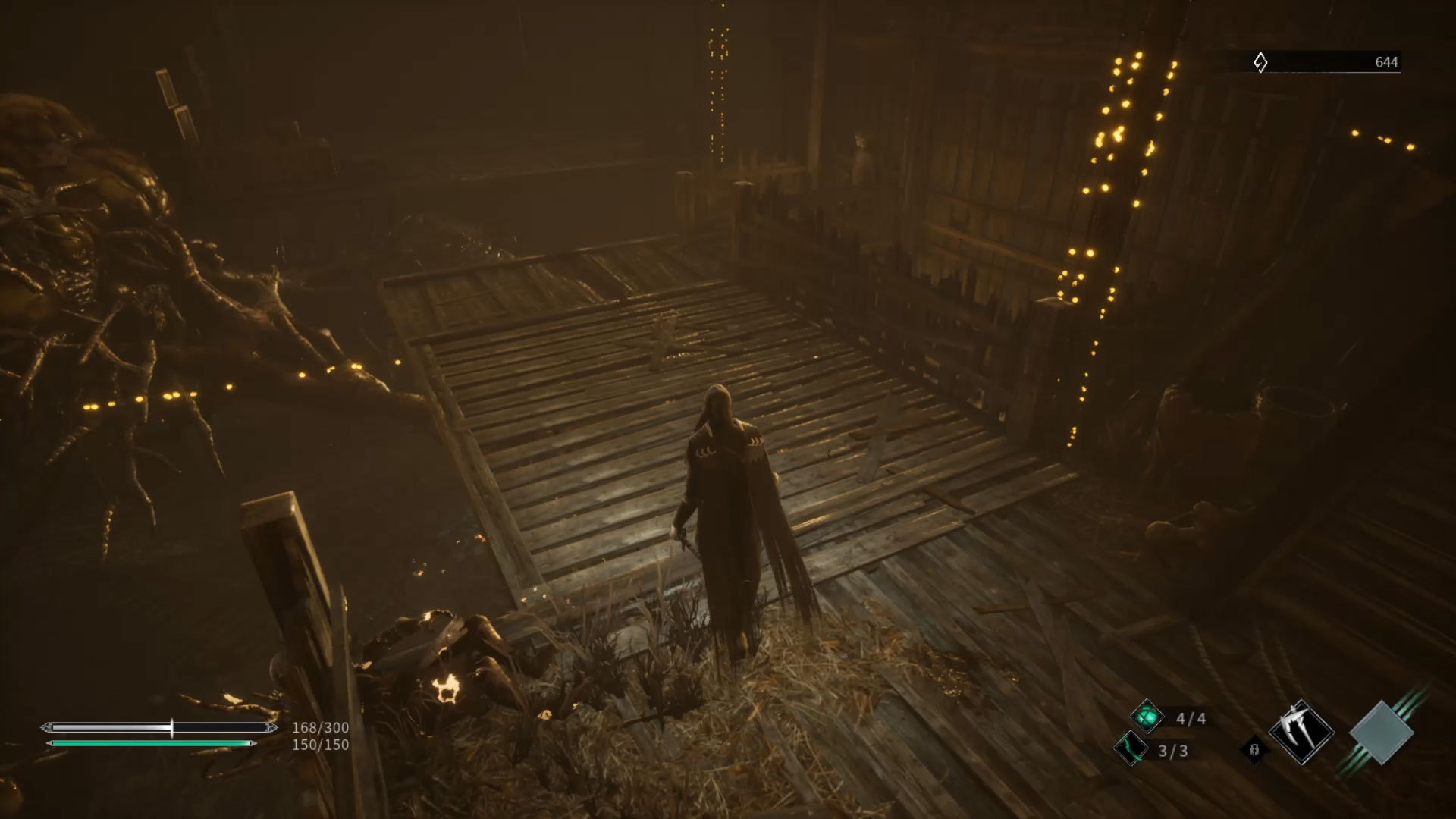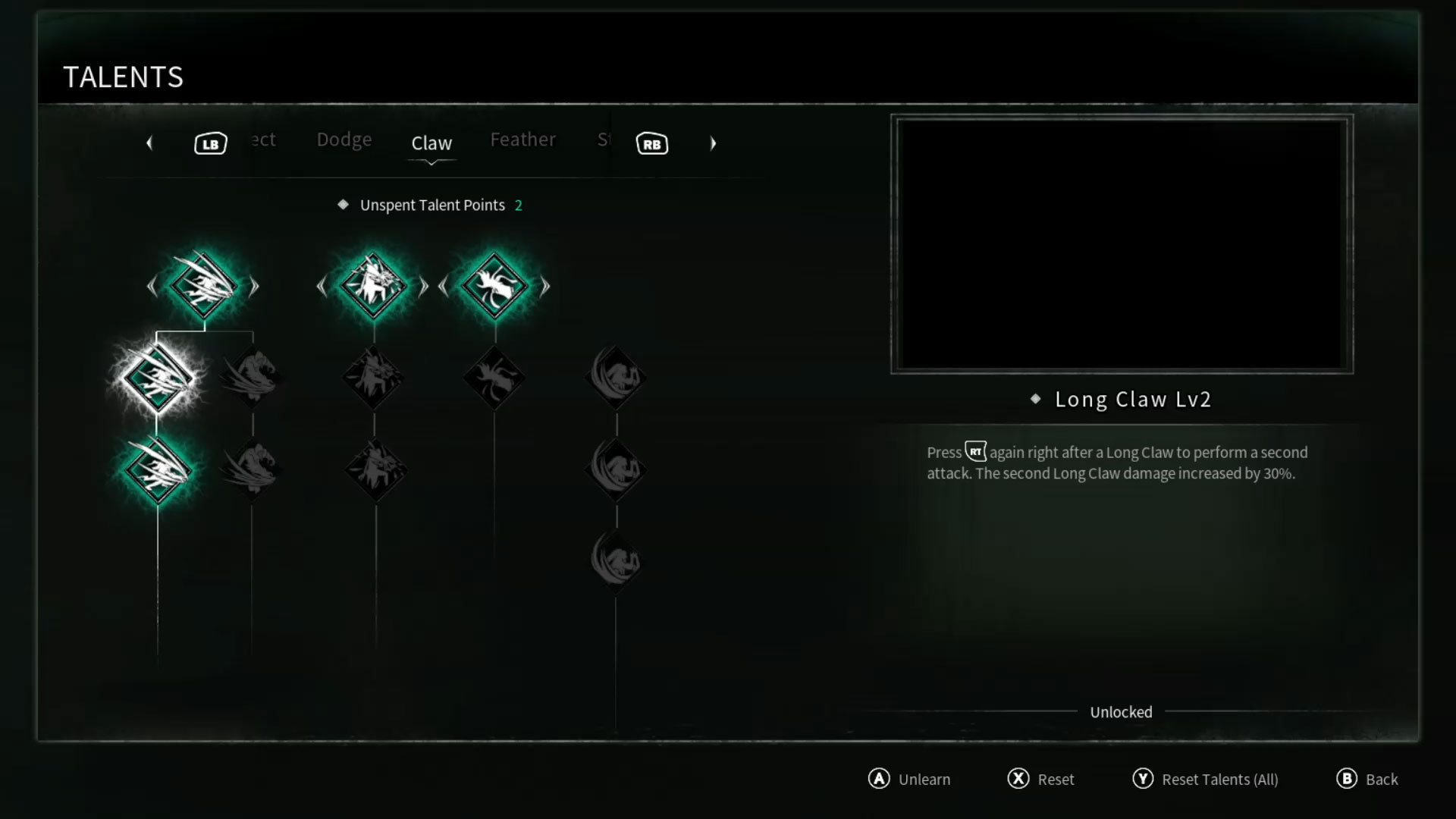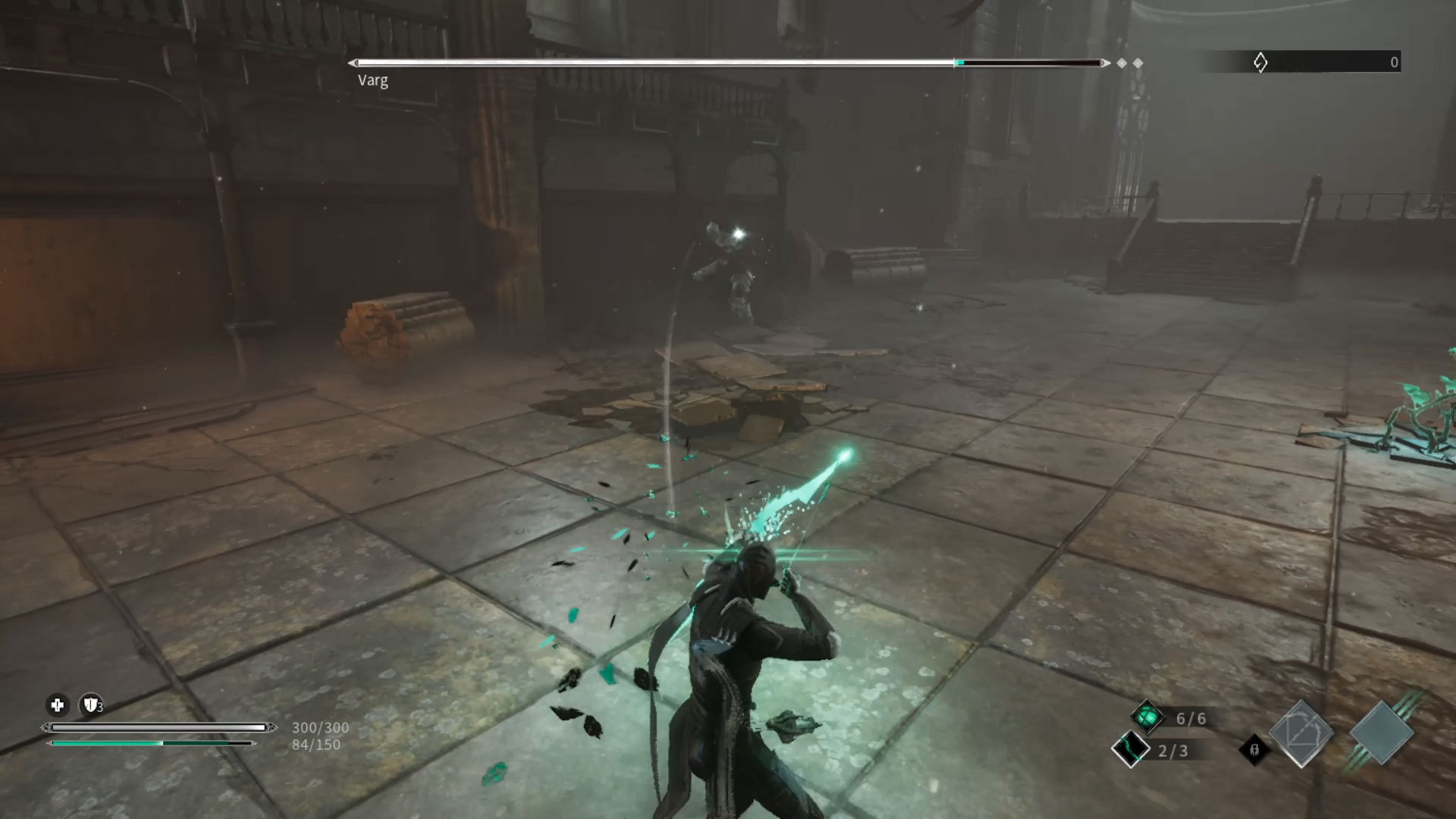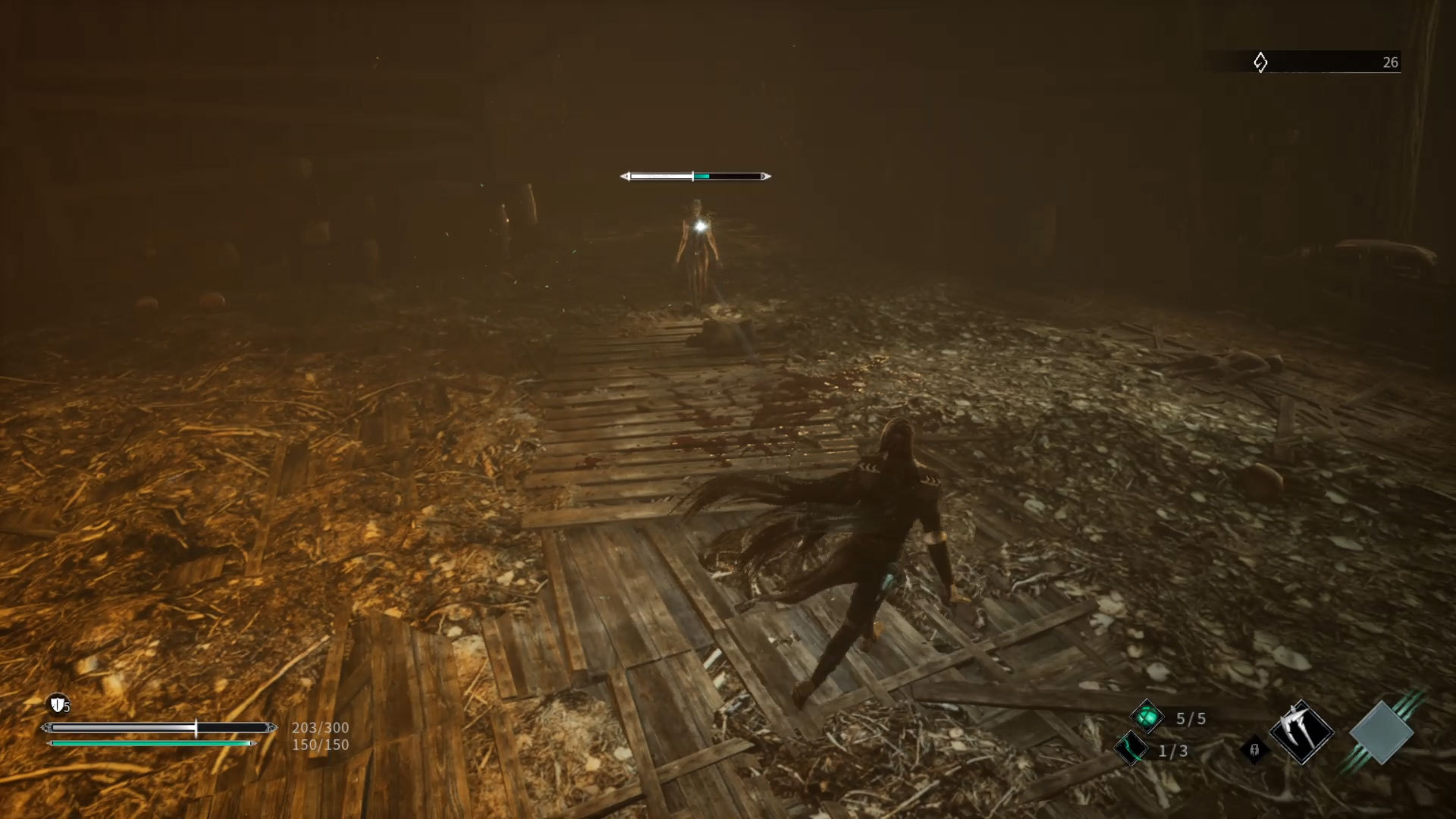Thymesia PC Review
A fast-paced soulsborne game for those who enjoyed Bloodborne and wished there was more.
Reviewed by LCLupus on Aug 16, 2022
Thymesia is the first game by OverBorder Studio, and it’s a soulsborne, hack-and-slash, action RPG that leans more into the Bloodborne side rather than the Dark Souls side of the soulsborne genre. You play as Corvus, a black-clad warrior who bears some level of similarity to the similarly named Corvo from the Dishonored franchise, and that is very much a compliment. However, his moveset is considerably less stealth-oriented and more geared towards decimating his foes in fast, brutal combat.

As a soulsborne game, expect the usuals. The game is tough; the enemies heavily project their attacks, so it’s all about learning their moves, the bosses are varied and challenging, and the narrative is vaguely told. Although the narrative is considerably less vague than your usual soulsborne affair, but we’ll get back to that in time.
Thymesia is a fast game. You need to learn to be fast and move around the world while facing your foes. Dodging is of paramount importance to ensure that your enemies don’t murder you first and your enemies hit hard, so it would be best to dodge as much as possible. There is also a parry system, but it is not quite as satisfying as other soulsborne games have managed. The parrying does not knock back your enemy but rather deflects each individual attack, and so you will need to hit back multiple attacks with the parry button to ensure you don’t lose health. Either that or you can just dodge away. Your choice!
The speed in Thymesia factors into the combat too. Staying on your toes and moving around a lot is the only way to stay alive, as there is no true block ability in the game. The combat comes in two main forms: regular attacks and claw attacks.

Each enemy effectively has two health bars. One of those health bars replenishes if you don’t strike it with the other kind of attack. So, regular attacks knock off some temporary damage, and then, before the health bar can replenish, you need to go in with the claw and deal major, permanent damage. All the attacks that deal this initial damage, called rift damage in-game, need to be supplemented with the claw to actually bring the enemy’s health down. This means that Thymesia does not let you be a ranged character; you have to get up close and personal.
There are ranged attacks, such as the feather and certain plague weapons, both of which will be explained shortly, but they tend not to do permanent damage. So, you need to be comfortable playing aggressively, getting up close to your enemies, and dealing as much damage as possible before their health replenishes. Thymesia is an aggressive game. It does not want you to play it safe. It wants you to get in there and risk death with every encounter.
This combat system is incredibly visceral, and while it does take some getting used to, it becomes a fantastic example of flow-oriented gameplay. Once you understand how all the moves work together, it’s easy to get lost in the gameplay, which is also helped by the fact that the game has great environments to explore. However, let’s first look at those other weapons mentioned earlier: the feather and plague weapons.

The feather is a form of ranged parry. There are certain enemy attacks that cannot be parried, dodged, or interrupted with an attack, and so you throw one of your sharp feathers at the enemy to interrupt these attacks. Your timing needs to be precise, though, as throwing the feather too late or too early will result in the enemy going through with their special attack, and these attacks tend to hurt a lot. So, you need to learn to use this system early. Although you can win fights without using it, as your interruption stuns the enemy, it gives you a fantastic shot at dealing a lot of damage before they can recover.
The plague weapons are a bit different. Every enemy has a weapon, obviously, and you can use your charged claw attack to steal their weapon from them. They will still keep their weapon, but you can now use that weapon as a once-off ability. These plague weapon attacks can absolutely devastate the enemy and allow some good variety in the combat that is otherwise focused on a single weapon set. However, the plague weapons actually come in two forms: these stolen ones, which can be used once, and a permanent system.
The permanent system involves collecting weapons from dead enemies and unlocking these plague weapons for continued use. You can equip one to two at a time based on an upgrade you can attain, and this form of plague weapon uses energy. Energy is replenished by hitting enemies with the claw or through upgraded attacks. These plague weapons work the same as the other type, but they can be upgraded and made even stronger and more effective.

This set of combat systems leads to a fluid combat system. Thymesia is fast, fluid, and varied. There is no variety in regular weapons, but there is variety in the plague weapon system and the upgrades. You can upgrade your character in various ways, such as making the sword stronger or adding a longer dodge, but the thing that really makes this system great is that it can be changed at any time. Whenever resting at a checkpoint, you can move your talent points around and adapt your upgrades based on who you’re fighting. Regular enemies and bosses need to be handled differently, after all.
And to make upgrading just that little bit better, you also have health potion variety, and your potions can be upgraded. This becomes very useful later while fighting the heavier bosses.
Now, Thymesia is a game that knows its structure. There is a set structure for every level, and there are three primary levels. Each level gives you an open world filled with keys to find, ladders to kick down, and shortcuts to discover. So, each level is like a small Dark Souls world. And each of these levels has the same kind of structure. You move through it, fighting regular enemies that respawn when you die or rest at a checkpoint and elite enemies that do not return. These elite enemies reward you with upgrade items when they’re killed, and they effectively serve as mini-bosses along your journey through the world.
Each level is filled with lore, upgrades to find, and tough enemies to face, and then you head to the boss once you’ve cleared the level. Each boss is varied and takes patience to learn. You will probably die several times before you finally learn them well enough to slaughter them, and you gain that usual sense of satisfaction from defeating them that you’re likely used to from other soulsborne games. They’re tough but fair. Although, some of their attacks can be very irritating. But you’ll learn to watch out for those!

In addition, each level can be returned once completed. New objectives are added; new bosses, more enemies to fight, etc. And so, there is good replayability and an effective re-use of existing level design that should please the developers. However, there isn’t a normal “new game plus” mode, as you can go back to any level at any time. So, it’s inherently always a new game plus, in a sense. But purists may not like that too much. The length of the game also varies on your ability and how much you engage with the world, but for the average player, it’ll probably be somewhere around 12-16 hours.
Thymesia is a game that doesn’t tell you much. You know there’s a plague of some kind, but that’s mostly it. The rest of the information comes through lore drops throughout the world. Small notes you can read. You can also find two characters who will give you information about various items you’ve acquired. And this is how you learn your way through the story, and it’s an interesting enough story, but it does take a backseat to the more environmental storytelling that tends to be evident in soulsborne games.
It is, in general, less vague than your average Dark Souls. You’re not likely to be checking out the descriptions of weapons to find some lore about the world. But Thymesia is a great game. It takes some getting used to, and the combat can feel a bit clunky at first, but once you’ve got the hang of it, you’ll be zipping around the screen dealing damage to every enemy in your way and hoping that you dodged in time to avoid them doing the same to you. This game can be wholeheartedly recommended for those who enjoy soulsborne games and would like a good one that wasn’t made by FromSoftware.
Don't forget to check out the Thymesia Beginner’s Guide if you're new or struggling with the game.
Justin van Huyssteen (@LC_Lupus)
Senior Editor, NoobFeed
Contributor, NoobFeed
Verdict
95
Related News
No Data.

